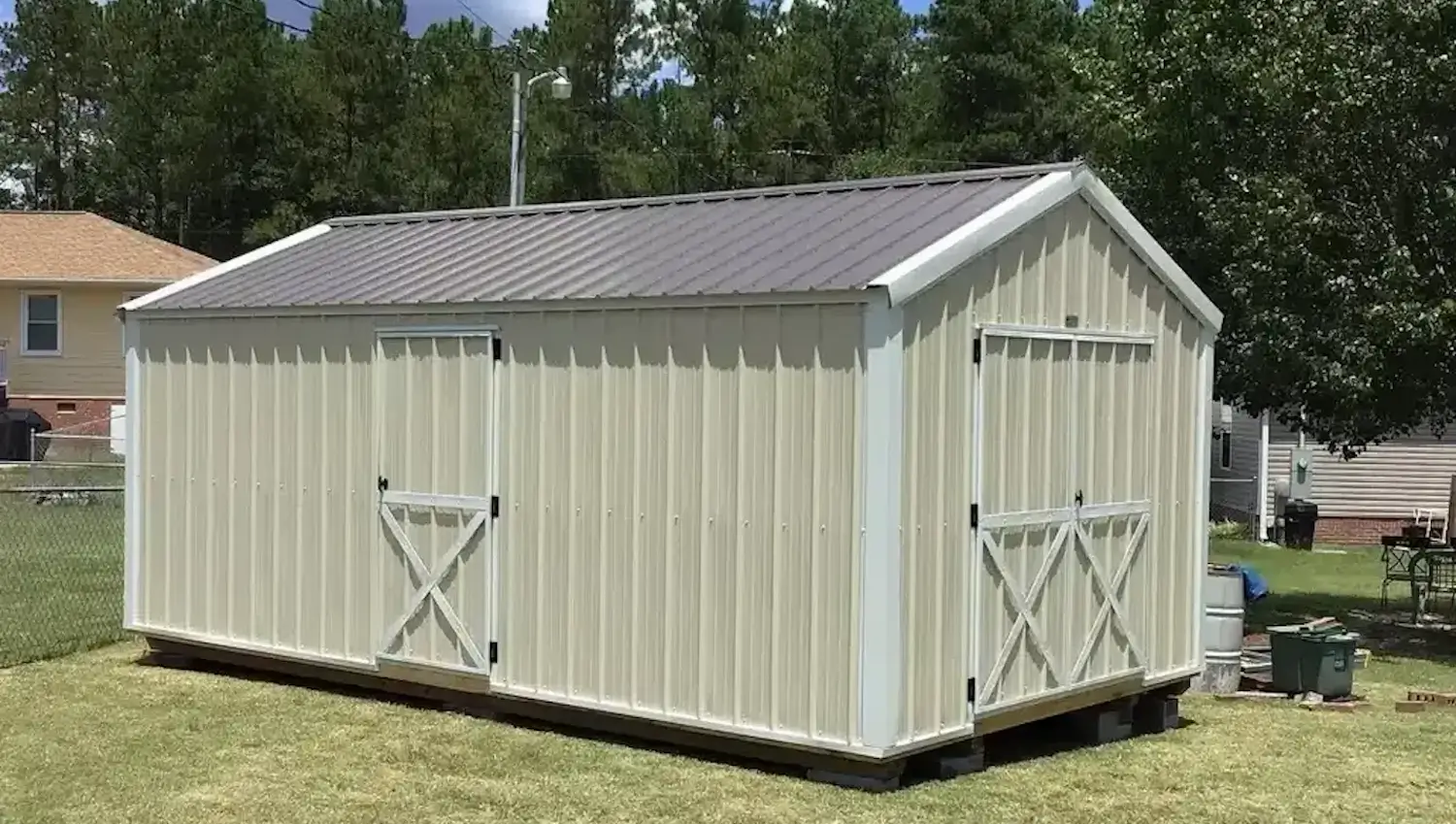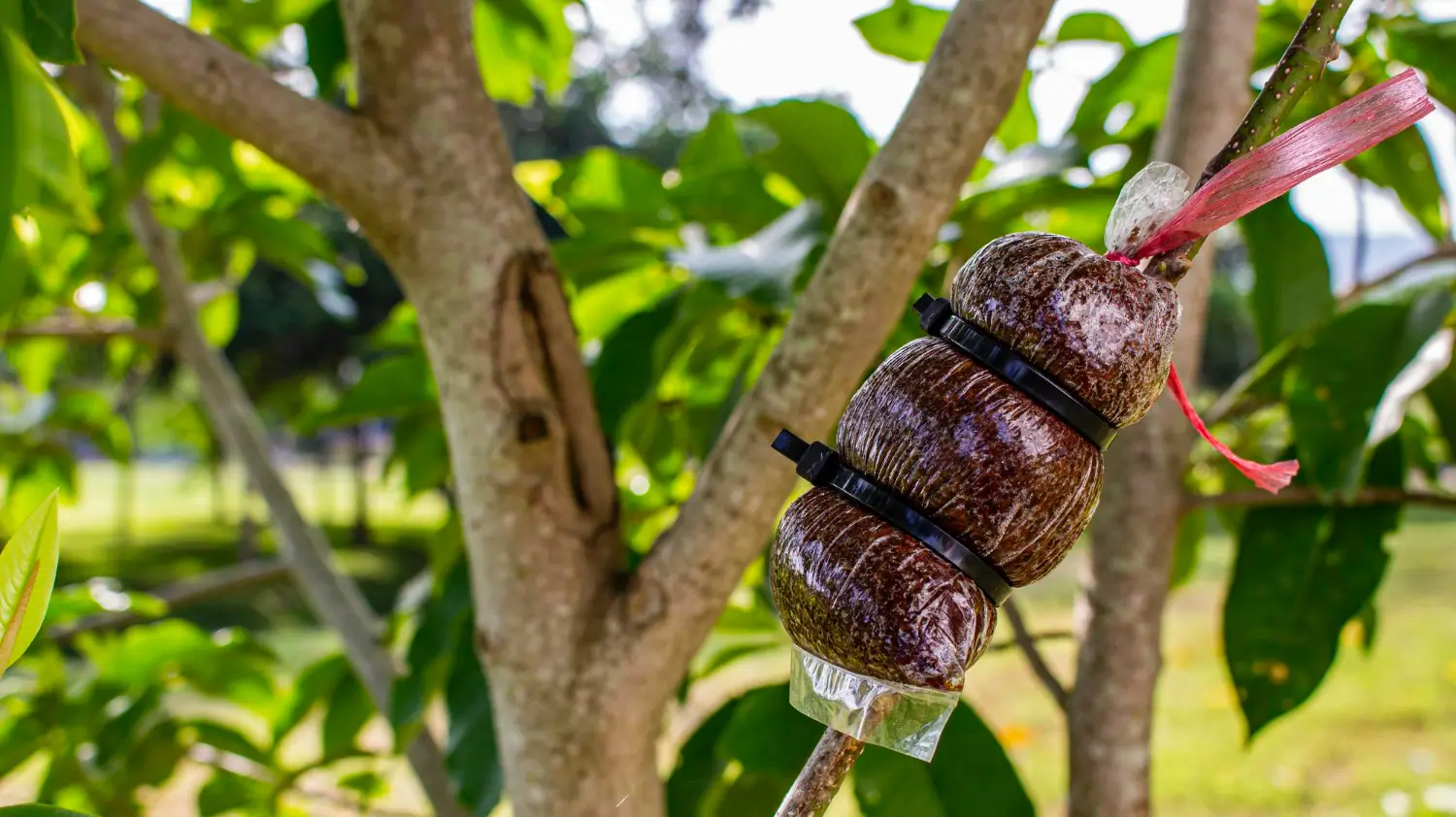
August 24, 2025

Many gardeners wish they could clone their favorite fruit trees or grow rare shrubs without the need for seeds or complicated grafting. Air layering is a simple technique that could be the perfect solution for it.
Propagation is an important part of gardening and horticulture. It allows gardeners to grow more of their favorite plants, save special plant varieties, and introduce new ones. For home gardeners and nurseries, propagating woody plants like fruit trees, shrubs, and ornamental plants is key to maintaining plant diversity and improving garden growth. This also helps gardeners reduce the need to buy plants from stores.
Growcycle is an online marketplace that offers a wide range of gardening products and resources. One such product is SUPERthrive® K-L-N Rooting Concentrate™, which contains hormones that promote vigorous root growth in trees, foliage, and flowering plants.
Air layering is a simple plant propagation technique where a new plant is grown from an existing plant while it is still attached to the parent. This is done by making an incision on a branch, wrapping the wounded area with a moist rooting medium (like sphagnum moss), and covering it to create a humid environment that encourages root growth. Once roots form in the air, the new plant can be cut from the parent and planted on its own.
Air layering has been used for centuries and is particularly common in tropical and subtropical regions. It was historically developed by ancient gardeners and farmers in Asia, where it became an essential method for propagating fruit trees and ornamental plants. In fact, this technique has been used in countries like China, India, and the Philippines for many years.
Here is the comparison of Air layering with other propagation methods:
| Propagation Method | Description | Best for | Success Rate | Time to Root | Genetic Integrity | Difficulty |
|---|---|---|---|---|---|---|
| Air Layering | The wound is made on a branch, and roots form while still attached to the parent plant. | Woody plants, trees, shrubs | High | Faster than cuttings | Identical to parent | Moderate |
| Cuttings | A section of the plant is cut and rooted in soil or water. | Herbaceous plants, softwood plants | Medium | Moderate | Can vary (depends on parent plant) | Easy |
| Grafting | Two plant parts (rootstock and scion) are joined together. | Fruit trees, roses | High | Slow (months) | Identical to scion | Complex |
| Seed Propagation | Plants are grown from seeds. | Most plants | Low | Slow (months to years) | Can vary (genetic diversity) | Easy to moderate |
Air layering offers several key benefits over other propagation methods:
Propagating woody plants offers significant advantages for gardeners, nurseries, and the environment:
Several types of woody plants are commonly propagated through air layering, including:
Here is a list of essential items and helpful tips to ensure safety and success during the process:
Here is a step-by-step guide on how to successfully complete the air layering process, from selecting the right branch to transplanting the newly rooted plant.
The first step is to select the right branch or stem for air layering. It is important to choose a healthy, mature branch that is not too young or too old. Ideal branches for air layering are typically 1 to 2 years old. These branches are mature enough to support root development but not too old and woody to be difficult to root. To ensure a successful propagation process, the selected branch should also be free from disease, damage, or signs of stress.
The best time to initiate the process is during the growing season, typically spring or early summer, when the plant is actively growing. This ensures that the plant can recover from the incision and supports the formation of new roots. Avoid attempting air layering in late fall or winter, as plants are dormant during these colder months.
Once the right branch is selected, the next step is preparing it for the air layering process. Start by carefully removing a small strip of bark, approximately 1 to 2 inches wide, from the selected branch. This can be done with a sharp knife, making sure not to cut too deeply into the wood.
After removing the bark, make a shallow incision in the underlying wood. This cut encourages the plant to produce a callus, which is essential for root formation. A sharp knife or pruning shears will make the incision process easier and more precise.
Rooting hormone can be applied to the exposed area to encourage root growth if available. To do so, simply dip the wound into rooting powder or use a brush to apply it to the incision. However, if rooting hormone is not available, many plants will still root successfully under the right conditions.
The next step involves wrapping the wounded area to create the air layer. Begin by taking a handful of moist sphagnum moss and wrapping it around the exposed area. It is important to squeeze out excess water from the moss but ensure that it remains moist enough to create a humid environment around the wound. This moist environment encourages root formation and keeps the wounded area hydrated.
Once the moss is in place, it should be securely wrapped with plastic wrap. The plastic wrap helps retain moisture and creates a humid microenvironment around the wounded area. To keep the wrap in place, use twist ties or aluminum foil.
Maintaining moisture around the wound is essential. Mist the moss with water using a spray bottle to prevent it from drying out. In dry or hot conditions, placing the entire plant or the air-layered branch in a humidity dome or a clear plastic bag can help retain moisture and ensure the success of the process.
Once the air layer is set up, it is crucial to monitor it regularly to check for root development. Depending on the plant species, roots will generally begin to form within a few weeks to a couple of months.
Signs of successful air layering include the appearance of white, healthy roots growing through the moss. If this happens, it is a good indication that the air layering process is working.
However, there are also signs of potential failure. Dry moss is a common issue, especially in hot or windy environments. Mold or fungal growth can also occur if excess moisture or poor air circulation around the wound creates the right conditions for these issues.
Typically, the roots should be at least 2 to 3 inches long before the new plant is separated from the parent. The timeframe for this varies depending on the species of plant. Some plants may develop roots in a few weeks, while others may take several months.
To check for root development, gently feel the moss or carefully cut a small section of the plastic wrap to inspect the roots. Once the roots are well-established, it’s time to detach the new plant. Use a sharp knife or pruning shears to cut below the rooted area, leaving enough stem attached to the new root system.
When transplanting a newly rooted plant, placing it in a small pot with well-draining soil is recommended. If transplanting directly into the garden, ensure the soil is loose and well-aerated to help the new plant establish itself.
During the first few weeks after transplanting, the new plant should be kept shaded and watered regularly as it adjusts to its new environment. Gradually increase its exposure to sunlight to avoid shocking the plant.
Air layering is a simple process, but certain challenges may still arise. Identifying and addressing these issues early is key to ensuring successful propagation.
If the moss becomes too dry, it is important to rehydrate it by spraying water on the moss. If necessary, replace the moss with fresh, moist sphagnum moss. For excessive moisture, replace any moldy moss and rewrap the incision site to ensure that the moss stays moist but not overly wet. Reapply the plastic wrap and twist ties to secure the moss properly.
Sometimes, the conditions around the air-layered branch may not be ideal. If mold appears or the moss dries out too quickly, try moving the plant to a more humid, shaded area. Increasing the humidity around the plant can help, especially in dry or windy environments. Consider using a humidity dome or plastic bag to maintain moisture levels in arid conditions.
Air layering is an easy and effective way to grow new plants, offering many benefits for gardeners, nurseries, and conservation efforts. It allows gardeners to create new plants from mature trees, shrubs, and other woody plants. This method helps keep plant varieties safe, produce plants with the same good qualities, and reduce the need to buy new plants.
Air layering is known for its high success rate, low impact on the parent plant, and its ability to grow plants that are difficult to propagate from cuttings. Explore Growcycle to learn more about the best indoor and outdoor gardening propagation methods.
Disclaimer: This material is for informational purposes only and should not be relied on for legal, medical, financial, or any other form of professional advice.
Air layering is a propagation technique where a branch is wounded, wrapped with a moist medium, and encouraged to develop roots while still attached to the parent plant. Once the roots form, the new plant is separated and transplanted.
Woody plants, such as fruit trees (e.g., apples, citrus), ornamental shrubs (e.g., azaleas, and camellias), and vines, are ideal for air layering. These plants have thicker stems that are harder to root from cuttings.
Rooting hormone, often in powder or gel form, stimulates root development at the incision site. It's not essential but can improve success rates, especially for difficult-to-root species.